
Panduan Komprehensif untuk Spondylolisthesis
10 Oct, 2023
 Tim Perjalanan Kesehatan
Tim Perjalanan KesehatanWhat is Spondylolisthesis?
Spondylolisthesis" is a medical term that refers to the condition where one vertebra in the spine slips forward or backward in relation to an adjacent vertebra. This displacement can occur for various reasons, such as degeneration of the spine due to aging, congenital abnormalities, stress fractures, or traumatic injuries. Spondylolisthesis is often categorized into different types based on its causes, such as dysplastic, isthmic, degenerative, traumatic, and pathological.
Ubah Kecantikan Anda, Tingkatkan Kepercayaan Diri Anda
Temukan kosmetik yang tepat prosedur untuk kebutuhan Anda.

Kami berspesialisasi dalam berbagai macam prosedur kosmetik

Spondylolisthesis affects about 6% of the population worldwide.
It is most common in people between the ages of 20 and 50.
Spondylolisthesis is more common in females than in males.
Types of Spondylolisthesis
1. Dysplastic Spondylolisthesis:
This type is characterized by a congenital defect in the formation of one or more vertebrae. It occurs during the developmental stage and is often present from birth. Structural abnormalities in the vertebrae contribute to the forward slippage.
2. Isthmic Spondylolisthesis:
This form results from a stress fracture, typically in the pars interarticularis—a small bridge of bone connecting the facet joints in the posterior spine. Repetitive hyperextension of the spine, common in certain sports or activities, can lead to this stress fracture and subsequent slippage.
Prosedur paling populer di
Kistektomi Laparosko
Diskon hingga 80%.
Nilai 90%.
Memuaskan
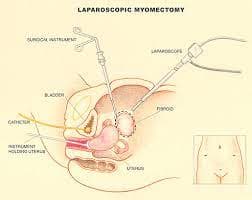
Miomektomi Laparosko
Diskon hingga 80%.
Nilai 90%.
Memuaskan
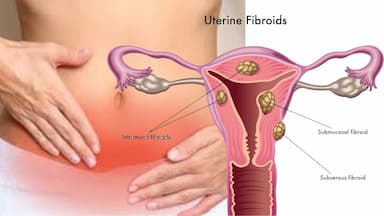
Lavh
Diskon hingga 80%.
Nilai 90%.
Memuaskan
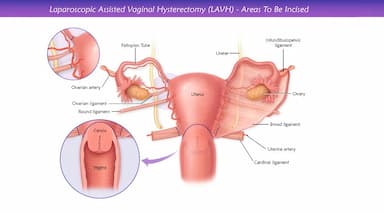
CATATAN
Diskon hingga 80%.
Nilai 90%.
Memuaskan
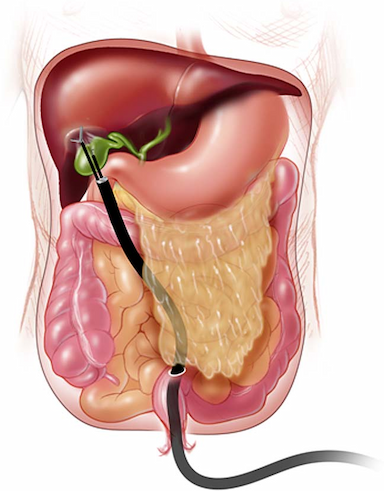
Cabg
Diskon hingga 80%.
Nilai 90%.
Memuaskan
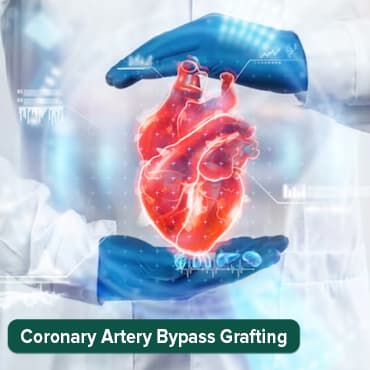
3. Degenerative Spondylolisthesis:
Associated with the aging process, this type is characterized by the gradual deterioration of spinal structures. The intervertebral discs lose height and integrity, and the facet joints may undergo degenerative changes, contributing to the slippage of one vertebra over another.
4. Traumatic Spondylolisthesis:
This type is a result of a sudden injury or trauma to the spine, leading to vertebral displacement. Accidents, falls, or forceful impacts can cause fractures or dislocations that result in the misalignment of the vertebrae.
5. Pathological Spondylolisthesis:
Caused by an underlying disease affecting the spinal structures, this type is characterized by structural weakness due to diseases like osteoporosis, tumors, or infections. The compromised integrity of the spine increases the risk of vertebral slippage.
Symptoms and Signs of Spondylolisthesis
Spondylolisthesis can manifest with a variety of symptoms and signs, which may vary depending on the degree of vertebral slippage, the location of the affected vertebrae, and whether there is nerve compression. Here are the common symptoms and signs associated with spondylolisthesis:
1. Lower Back Pain: Persistent lower back pain is a hallmark symptom of spondylolisthesis. The pain is often described as a dull ache that may worsen with activity, such as standing or walking, and improve with rest.
2. Radiating Leg Pain: Some individuals may experience radiating pain that travels down one or both legs. This is often referred to as sciatica. The pain may be sharp, burning, or tingling in nature and can be accompanied by numbness or weakness in the legs.
3. Tightness or Stiffness: Stiffness in the lower back and reduced flexibility can be a symptom of spondylolisthesis. Individuals may find it challenging to bend forward or backward comfortably.
4. Change in Posture: Spondylolisthesis can alter a person's posture. Some individuals may develop a noticeable forward-leaning posture, particularly in more severe cases.
5. Muscle Weakness: Weakness in the muscles of the legs or buttocks can occur when there is compression of spinal nerves. This weakness may result in difficulty walking, climbing stairs, or lifting objects.
6. Numbness and Tingling: Numbness and tingling sensations, known as paresthesia, can affect the legs or feet. These sensations are often associated with nerve compression.
7. Loss of Bowel or Bladder Control (Rare): In extremely severe cases of spondylolisthesis with significant spinal cord compression, there may be a loss of bowel or bladder control. This is a medical emergency and requires immediate attention.
8. Fatigue: Chronic pain and discomfort associated with spondylolisthesis can lead to fatigue and a decreased ability to perform daily activities.
9. Limited Mobility: Individuals with spondylolisthesis may experience limited mobility due to pain and stiffness. This can impact their ability to participate in physical activities or maintain an active lifestyle.
Causes of Spondylolisthesis
1: Congenital Spondylolisthesis: Some individuals are born with a congenital predisposition to spondylolisthesis. This occurs when there are abnormalities in the structure of the vertebrae, such as dysplasia (underdevelopment) of the facet joints or elongation of the pars interarticularis (a portion of the vertebra). Congenital spondylolisthesis is often present from birth but may not become symptomatic until later in life.
2. Degenerative Spondylolisthesis: This is the most common type of spondylolisthesis and typically occurs in older adults. It is primarily caused by age-related changes in the spine, including:
- Degeneration of Intervertebral Discs: The intervertebral discs between the vertebrae can wear down over time, leading to a loss of disc height and stability.
- Facet Joint Arthritis: Arthritis of the facet joints, which are the small joints that connect adjacent vertebrae, can result in the slippage of one vertebra over another.
- Thickening of Ligaments: The ligaments that support the spine may thicken and contribute to instability.
3. Traumatic Spondylolisthesis: Spondylolisthesis can develop as a result of acute injury or trauma to the spine. This may include fractures or dislocations of the vertebrae due to accidents or falls.
4. Pathological Spondylolisthesis: In some cases, spondylolisthesis can occur due to underlying medical conditions or diseases, such as tumors, infections, or metabolic bone disorders, that weaken the vertebral structures.
5. Isthmic Spondylolisthesis: This is a specific subtype of spondylolisthesis and is related to a defect in the pars interarticularis, a portion of the vertebra that connects the front and back parts. It can be caused by repetitive stress or microtrauma, particularly in activities that involve hyperextension of the lower back, such as gymnastics or weightlifting.
6. Idiopathic Spondylolisthesis: In some cases, the exact cause of spondylolisthesis cannot be determined, and it is referred to as idiopathic. It may occur without an obvious congenital, degenerative, traumatic, or pathological cause.
It's important to note that while these are the primary causes of spondylolisthesis, the condition's development can also be influenced by factors such as genetics, lifestyle, and mechanical stresses on the spine.
Diagnosis of Spondylolisthesis
I. Imaging Studies
A. X-rays
- Purpose:
- Visualize the alignment and structure of the vertebrae.
- Findings:
- Detection of slippage, fractures, or deformities.
- Grading the severity of spondylolisthesis.
B. MRI (Magnetic Resonance Imaging)
- Purpose:
- Detailed imaging of soft tissues, discs, and nerves.
- Findings:
- Identifying nerve compression.
- Evaluating the condition of intervertebral discs.
C. CT Scans (Computed Tomography)
- Purpose:
- Detailed cross-sectional images of the spine.
- Findings:
- Precise assessment of bony structures.
- Identification of fractures, defects, or abnormalities.
II. Physical Examination
A. Neurological Tests
- Purpose:
- Assessing nerve function and signs of compression.
- Tests:
- Reflex testing, muscle strength assessment, sensory examinations.
- Identifying any neurological deficits.
III. Medical History
A. Identifying Risk Factors
- Purpose:
- Understanding factors contributing to spondylolisthesis.
- Inquiries:
- Family history of spine-related conditions.
- Past injuries, activities, or occupations posing a risk.
Treatment of Spondylolisthesis
The treatment of spondylolisthesis depends on several factors, including the severity of the condition, the presence of symptoms, the age and overall health of the individual, and the underlying cause. Here are the main treatment options for spondylolisthesis:
1. Observation and Lifestyle Modifications:
- In cases of mild spondylolisthesis without significant symptoms, observation and lifestyle modifications may be sufficient.
- Lifestyle modifications may include avoiding activities that exacerbate symptoms, maintaining a healthy weight, and engaging in exercises that strengthen the core and back muscles to provide better spinal support.
2. Physical Therapy:
- Physical therapy is often recommended to improve flexibility, strengthen muscles, and alleviate pain.
- Therapists can teach specific exercises and stretches tailored to the individual's condition to help reduce symptoms and improve mobility.
3. Pain Management:
- Over-the-counter pain relievers, such as nonsteroidal anti-inflammatory drugs (NSAIDs), may be recommended to manage pain and inflammation.
- In some cases, corticosteroid injections into the affected area can provide temporary pain relief.
4. Bracing:
- Bracing may be considered for individuals with spondylolisthesis to provide additional support to the spine.
- Braces are typically used for a limited time, such as during periods of increased pain or when engaging in physical activities.
5. Surgical Intervention:
- Surgery is usually reserved for severe cases of spondylolisthesis that do not respond to conservative treatments or when there is spinal instability, neurological symptoms, or significant pain.
- Common surgical procedures for spondylolisthesis include:
- Spinal Fusion: This procedure involves fusing two or more vertebrae together to stabilize the spine and prevent further slippage. Bone grafts or implants may be used.
- Decompression Surgery: If nerve compression is a significant issue, decompression surgery may be performed to relieve pressure on the affected nerves.
- Laminectomy: In some cases, a laminectomy may be necessary to remove part of the lamina (the bony arch of the vertebra) to relieve pressure on the spinal cord or nerves.
The choice of surgical procedure depends on the individual's specific condition and the surgeon's recommendations.
6. Rehabilitation and Recovery:
- After surgery, individuals will typically undergo a period of rehabilitation to regain strength and mobility.
- Physical therapy and post-operative care are essential for a successful recovery.
7. Regular Follow-Up:
Regular follow-up appointments with a healthcare provider are important to monitor the progress of spondylolisthesis and adjust treatment as needed.
It's crucial for individuals with spondylolisthesis to work closely with healthcare professionals to determine the most appropriate treatment plan based on their unique circumstances. Early diagnosis and intervention can help manage the condition effectively and improve the quality of life for those affected by spondylolisthesis.
Risk Factors
Several factors increase the risk of developing spondylolisthesis, though it can also occur without any known risk factors:
- Age: Spondylolisthesis is more commonly observed in adolescents and young adults, with the condition often becoming apparent during growth spurts.
- Genetics: There may be a genetic predisposition to spondylolisthesis, as it can run in families.
- Sports Participation: Participation in certain sports that involve repetitive hyperextension of the spine, such as gymnastics, weightlifting, or football, can increase the risk. These activities put stress on the spine, especially in the lower back.
- Congenital Factors: Some individuals may have congenital abnormalities in the vertebrae that predispose them to spondylolisthesis.
- Gender: While the condition can affect both genders, some studies suggest that males may be more commonly affected than females.
- Trauma: Traumatic injuries to the spine, such as fractures, can also lead to spondylolisthesis in some cases.
Complications of Spondylolisthesis
Spondylolisthesis can lead to various complications, which can vary in severity depending on the degree of vertebral slippage and other factors:
- Spinal Stenosis: This complication occurs when the spinal canal narrows due to the vertebral slippage, leading to compression of the spinal cord and nerves. Symptoms may include pain, numbness, and weakness in the legs.
- Nerve Compression: When the displaced vertebrae compress spinal nerves, it can result in symptoms such as sciatica, characterized by pain radiating down the leg, as well as tingling and weakness.
- Loss of Mobility: Severe cases of spondylolisthesis can significantly limit mobility and quality of life, making daily activities challenging.
- Bowel or Bladder Dysfunction: Although rare, spondylolisthesis can lead to dysfunction in bowel or bladder control in severe cases.
Prevention of Spondylolisthesis
Preventing spondylolisthesis is challenging because it is often congenital or develops over time. However, some preventive measures can help reduce the risk or slow down its progression:
- Maintain a Healthy Weight: Excess body weight can put additional stress on the spine, so maintaining a healthy weight can reduce the risk of spondylolisthesis.
- Regular Exercise: Engaging in regular physical activity, including exercises that focus on strengthening the core and back muscles, can provide better spinal support.
- Good Posture: Practicing proper posture and body mechanics, both during daily activities and exercise, can minimize strain on the spine.
- Nutrition During Pregnancy: Ensuring proper nutrition during pregnancy, including an adequate intake of folic acid, can reduce the risk of congenital spondylolisthesis in infants.
Outlook/Prognosis of Spondylolisthesis?
The outlook and prognosis of spondylolisthesis depend on several factors, including the severity of the condition, the specific vertebrae affected, the presence of symptoms, and the effectiveness of treatment. Here are some key points regarding the outlook:
1. Grades of Spondylolisthesis: Spondylolisthesis is graded based on the degree of vertebral slippage. Grades range from I (mild) to IV (severe). Mild cases (Grade I and II) often have a better prognosis compared to severe cases (Grade III and IV).
2. Symptoms: The presence and severity of symptoms significantly impact the prognosis. Some individuals with spondylolisthesis may experience no symptoms or only mild discomfort, while others may have more debilitating symptoms like pain, numbness, or weakness.
3. Conservative Treatment: Many cases of spondylolisthesis can be managed conservatively with physical therapy, pain management, and lifestyle modifications. In such cases, individuals can lead relatively normal lives with minimal impact on their daily activities.
4. Surgical Intervention: Severe cases or those that do not respond to conservative treatment may require surgical intervention. Surgery can help stabilize the spine and alleviate symptoms. The prognosis after surgery can be positive, but it depends on the surgical technique used and the patient's overall health.
5. Complications: Spondylolisthesis can lead to complications such as spinal stenosis or nerve compression. The prognosis may be less favorable if these complications arise and are not adequately managed.
6. Lifestyle and Exercise: Engaging in regular exercise and maintaining a healthy lifestyle can improve the prognosis for individuals with spondylolisthesis. Strengthening the core and back muscles can help support the spine and reduce the risk of further slippage.
7. Regular Follow-up: Regular medical follow-up and monitoring are essential to track the progress of the condition and adjust treatment as needed.
In summary, the outlook for spondylolisthesis varies from person to person and depends on the specific circumstances of the condition. With appropriate treatment and lifestyle management, many individuals can effectively manage spondylolisthesis and lead fulfilling lives. However, severe cases may require more extensive interventions and may have a less favorable prognosis. It's important for individuals with spondylolisthesis to work closely with healthcare professionals to determine the best course of action for their specific situation.
Perawatan Kesehatan
Beri diri Anda waktu untuk bersantai
Harga Terendah Dijamin!

Harga Terendah Dijamin!



